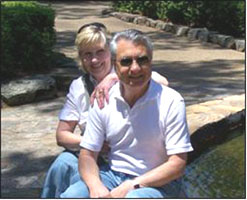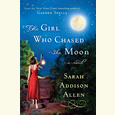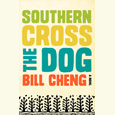A Community Within a Community
Lee Dorman’s new collection of photographs documents the history of Nashville’s Jews
Jews have been part of Nashville society from the city’s earliest years. The first recorded birth of a Jewish child took place in 1795, and though the Jewish population has always been small—today numbering just 7,500—it has played a major role in Nashville’s cultural and commercial life. In Nashville’s Jewish Community, Lee Dorman has compiled more than 200 photographs from the Annette Levy Ratkin Jewish Community Archive, creating a visual chronicle of the city’s Jewish citizens from 1850 to 1950. The pictures, along with Dorman’s detailed, often fascinating captions, create a sense of the rich, lively history of Nashville’s Jews.
Many of Nashville’s Jewish families have roots in the city that go back more than a hundred years. The first arrivals were often peddlers or merchants, and a sizable number were European immigrants. Nashville’s Jewish Community features some remarkable images, including a photo of the stern face of Bavarian-born Zadoc Levy, a tailor who came to Nashville in 1852 and founded the business that still survives as Levy’s clothing store. Jacob Bloomstein, a Polish immigrant deemed “Nashville’s wealthiest Jewish citizen” in the 1870 census, looks dapper and unflappable in his formal portrait, but Dorman’s caption explains that he spent part of the Civil War as a Union prisoner, charged with smuggling supplies to the Confederate Army.
 Some of the most historically interesting photographs in the book are in the section devoted to Jewish religious life. There are pictures of early synagogues, including the Vine Street Temple with its spectacular onion domes, and a lovely 1940 photo of the bimah and ark in the Gay Street Synagogue. Many of the city’s rabbis are pictured, from Judah Weschler with his 1869 Hebrew school class, to Beth Davidson, who became Nashville’s first female rabbi in 1987.
Some of the most historically interesting photographs in the book are in the section devoted to Jewish religious life. There are pictures of early synagogues, including the Vine Street Temple with its spectacular onion domes, and a lovely 1940 photo of the bimah and ark in the Gay Street Synagogue. Many of the city’s rabbis are pictured, from Judah Weschler with his 1869 Hebrew school class, to Beth Davidson, who became Nashville’s first female rabbi in 1987.
“The strength of every community is its people,” writes Dorman, and many of the photographs in Nashville’s Jewish Community feature private individuals whose influence far exceeds their fame—people like Joe Fensterwald, the founder of a downtown department store who was involved in starting a social-services center in 1909 that assisted 300 people each week. Annie Garfinkle struck an early blow for religious tolerance when she protested the placing of Bibles in Nashville’s public schools in 1912.
 Dorman doesn’t omit the more celebrated sons and daughters of Jewish Nashville, such as Dinah Shore, and he also includes a section devoted to prominent businessmen like Reuben Mills, founder of the sorely missed Mills Bookstore. Dorman touches on the more troubling aspects of being Jewish in the buckle of the Bible Belt, as well, including photographs that document the 1958 bombing of the Jewish Community Center and recounting the unsuccessful 1981 KKK plot to blow up the Temple.
Dorman doesn’t omit the more celebrated sons and daughters of Jewish Nashville, such as Dinah Shore, and he also includes a section devoted to prominent businessmen like Reuben Mills, founder of the sorely missed Mills Bookstore. Dorman touches on the more troubling aspects of being Jewish in the buckle of the Bible Belt, as well, including photographs that document the 1958 bombing of the Jewish Community Center and recounting the unsuccessful 1981 KKK plot to blow up the Temple.
Dorman, a lifelong Nashvillian and former general manager of WLAC radio, has created an engaging pictorial narrative in Nashville’s Jewish Community. Part family scrapbook, part carefully annotated photo documentary, the book should appeal to anyone with an interest in the diverse history of the city.
Dorman will sign copies of his book at Barnes & Noble Bookseller in Brentwood on April 3 at 1 p.m.


